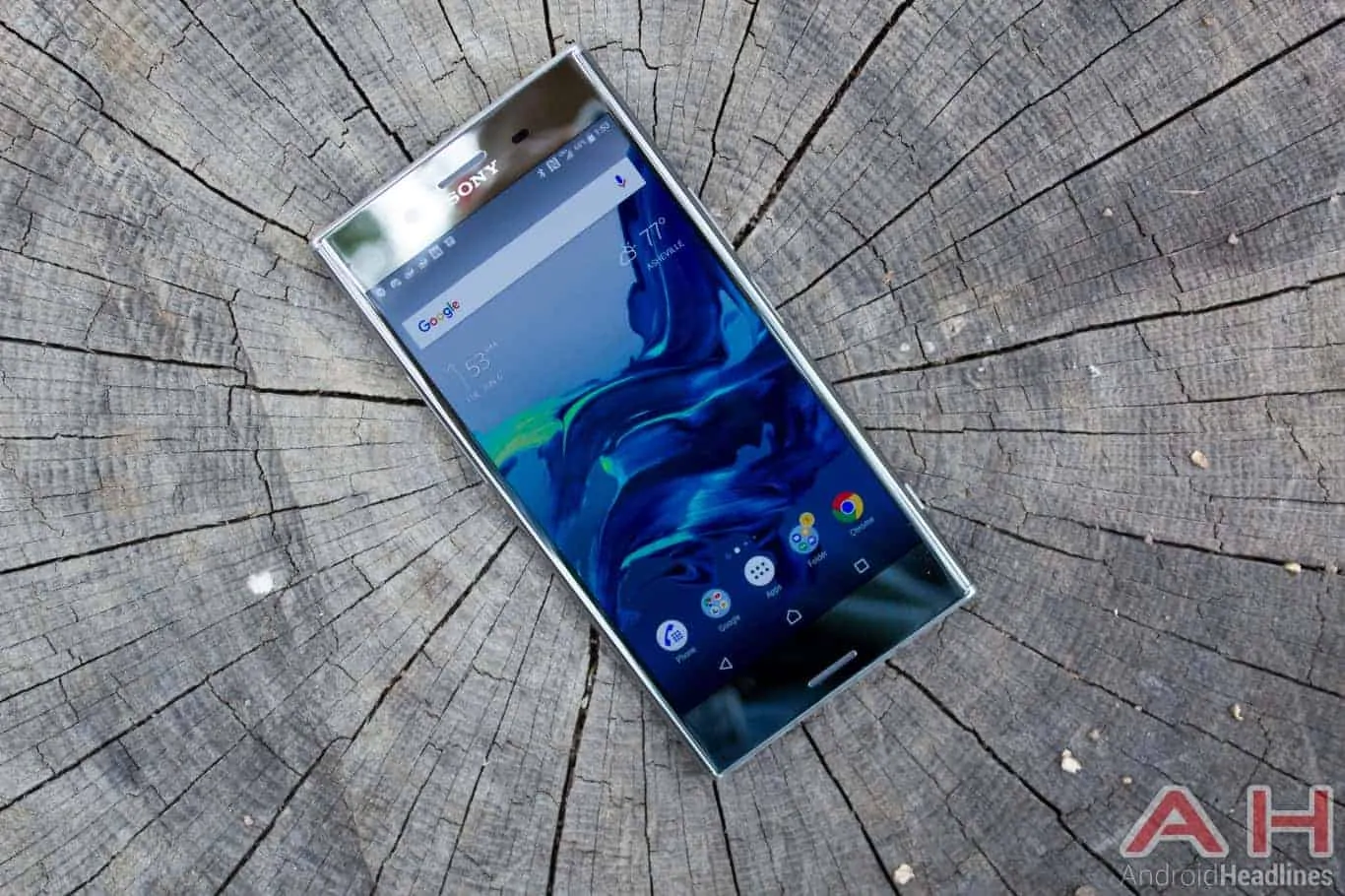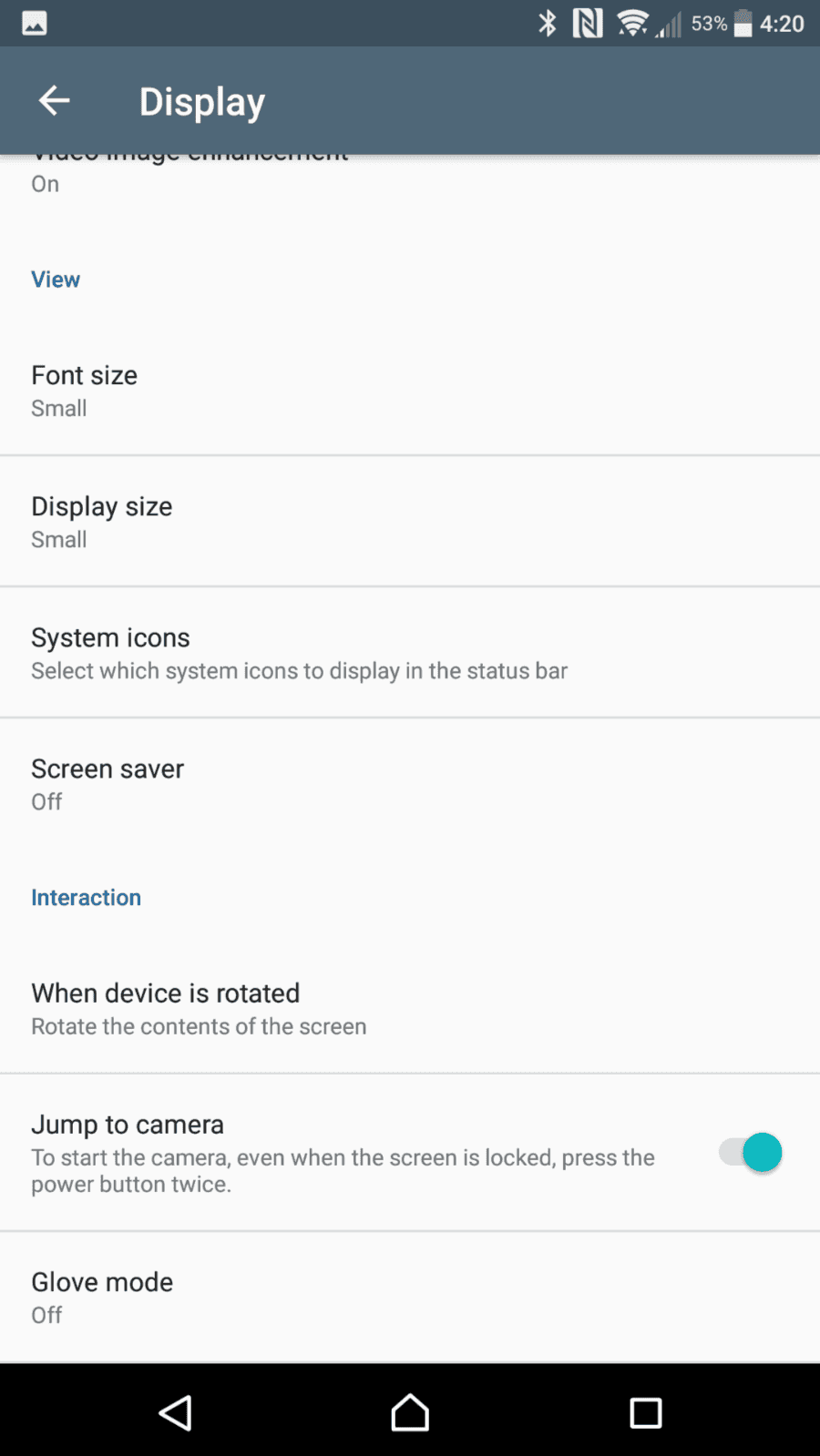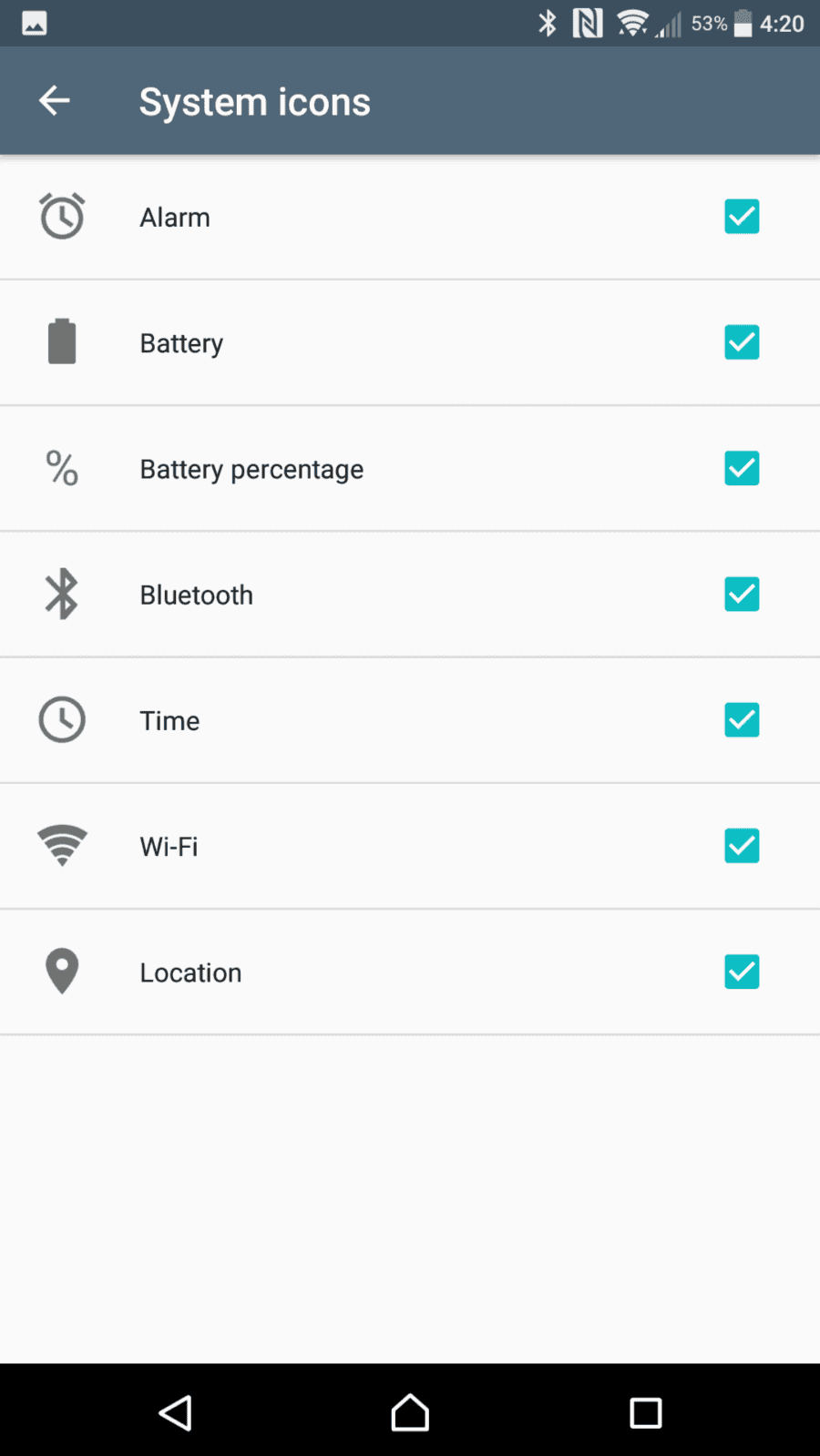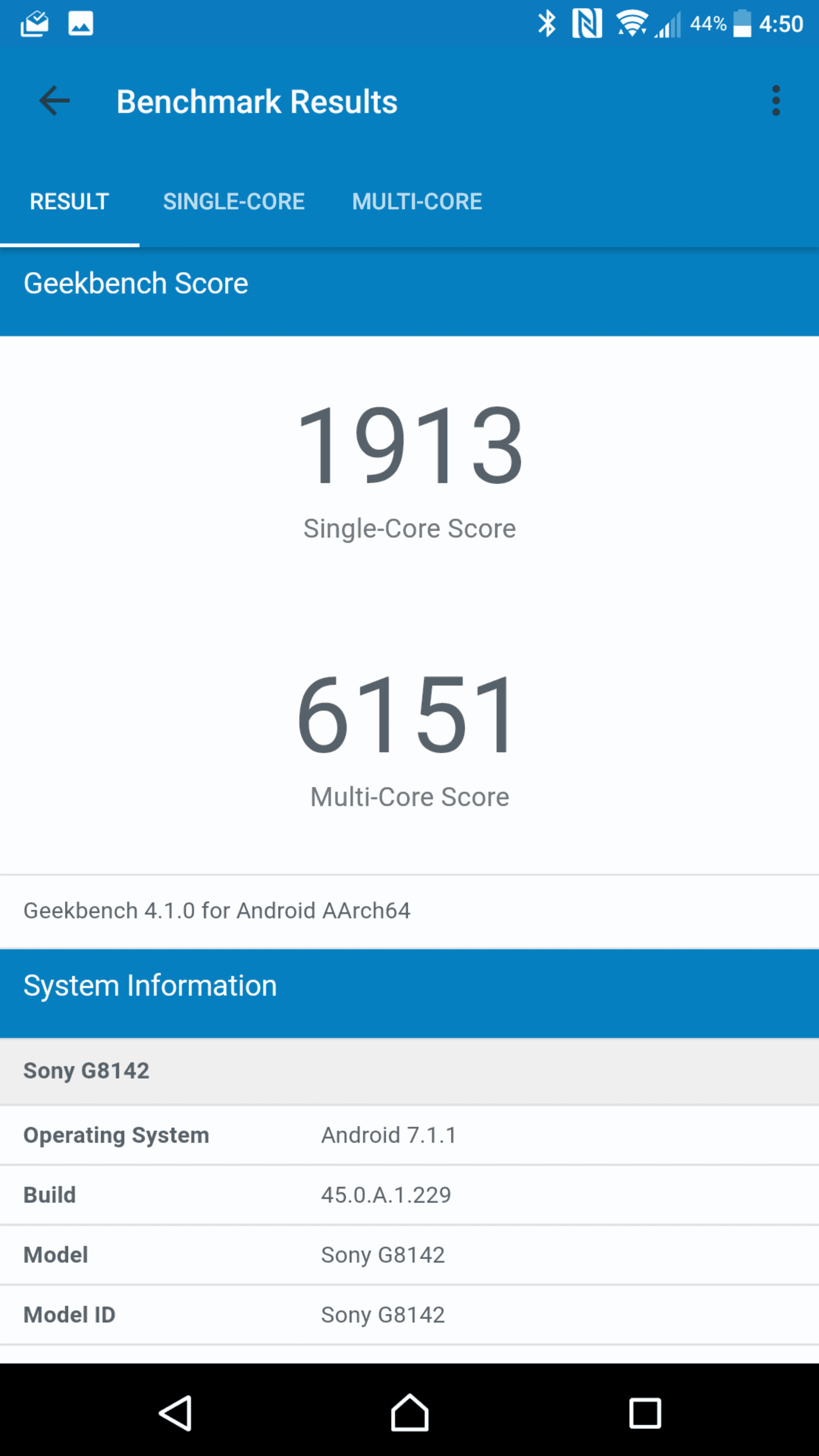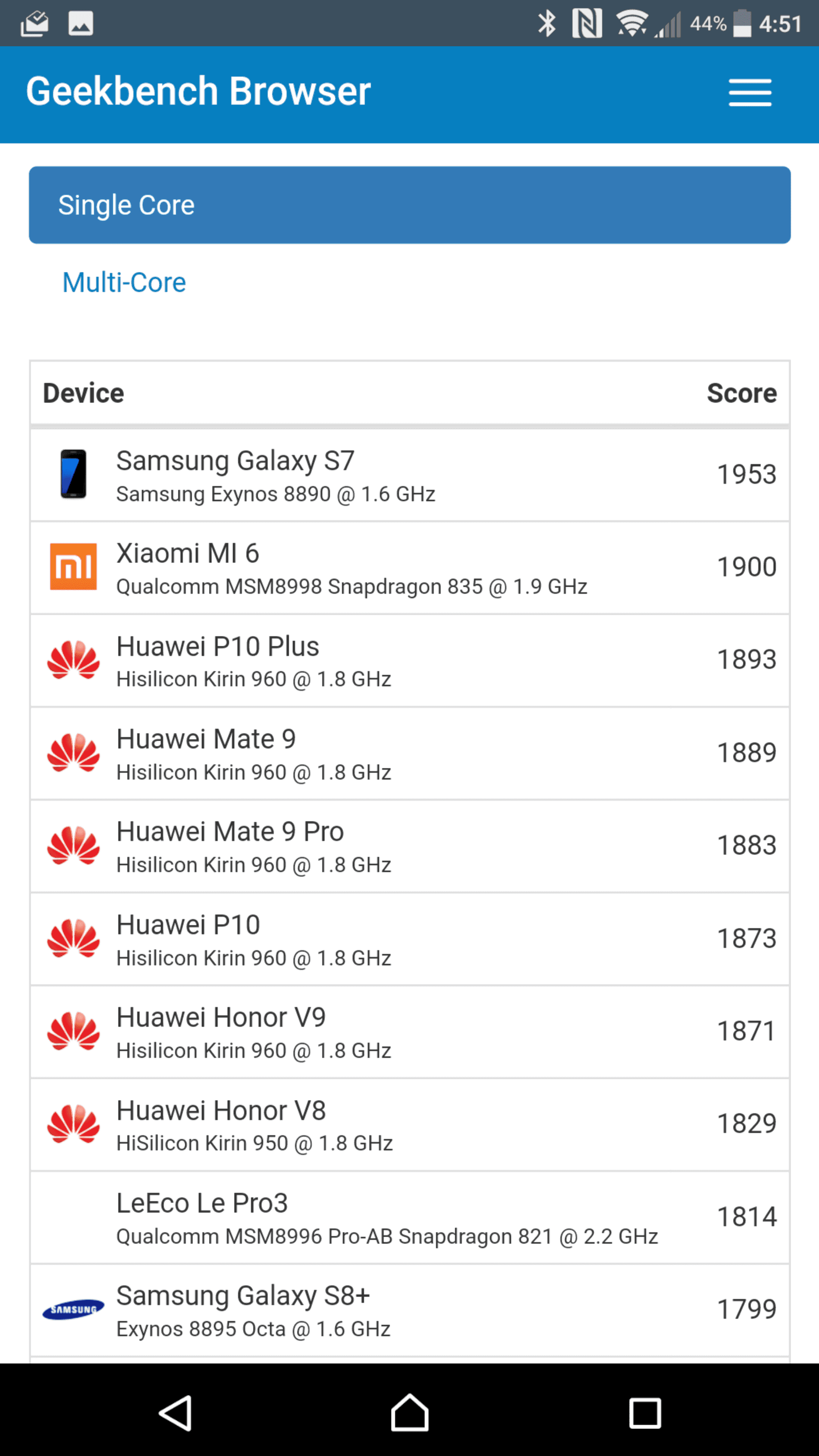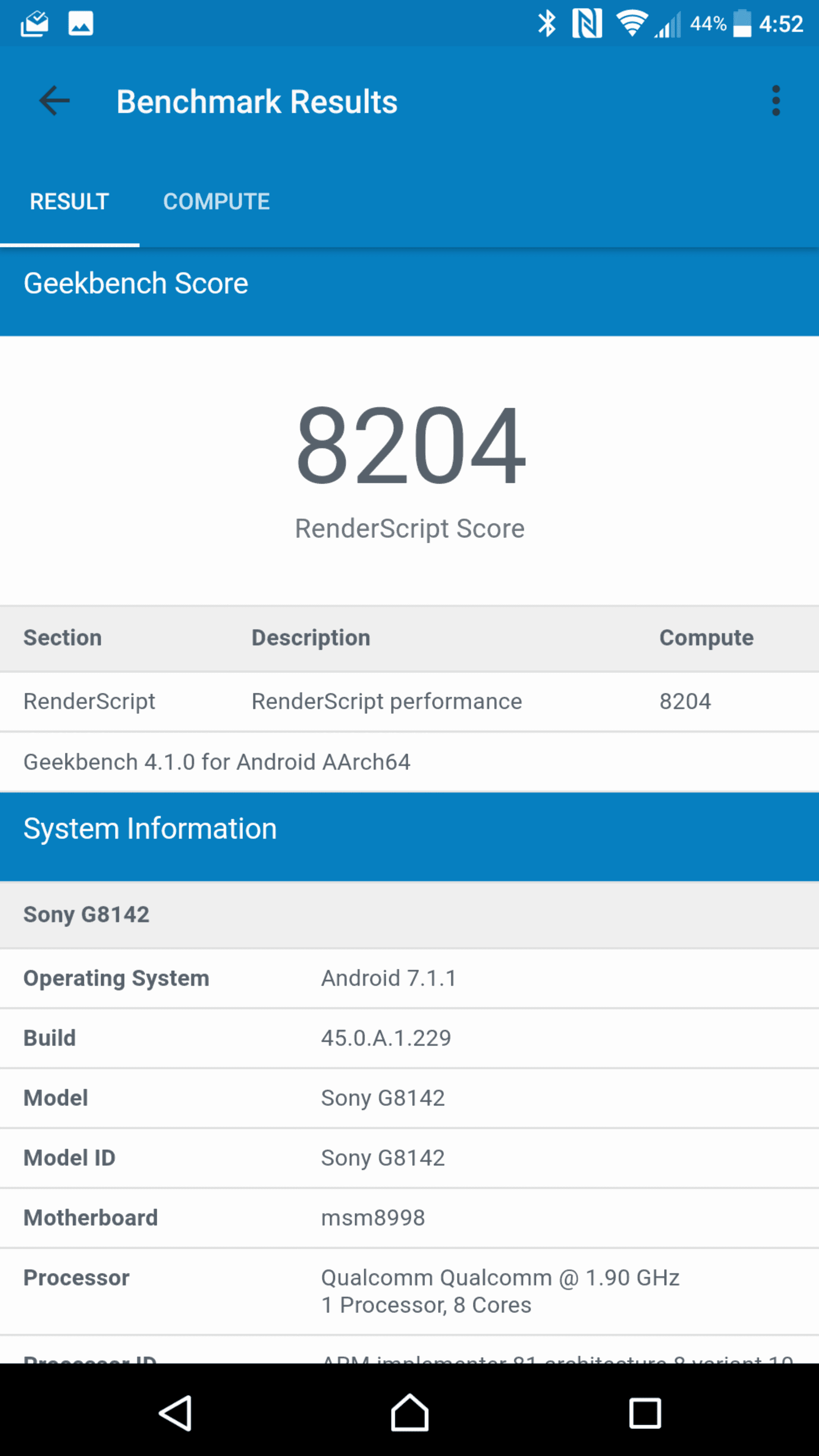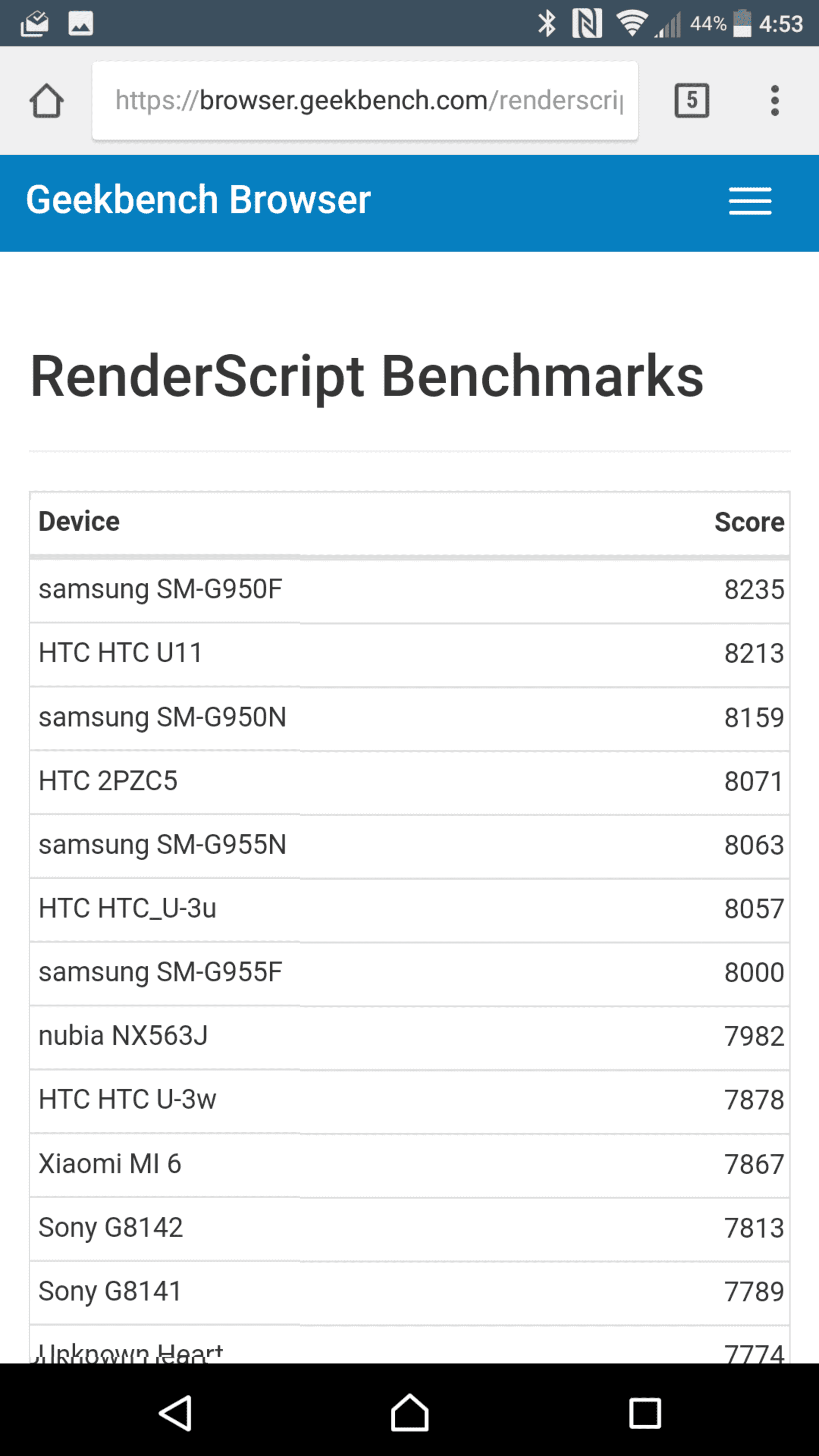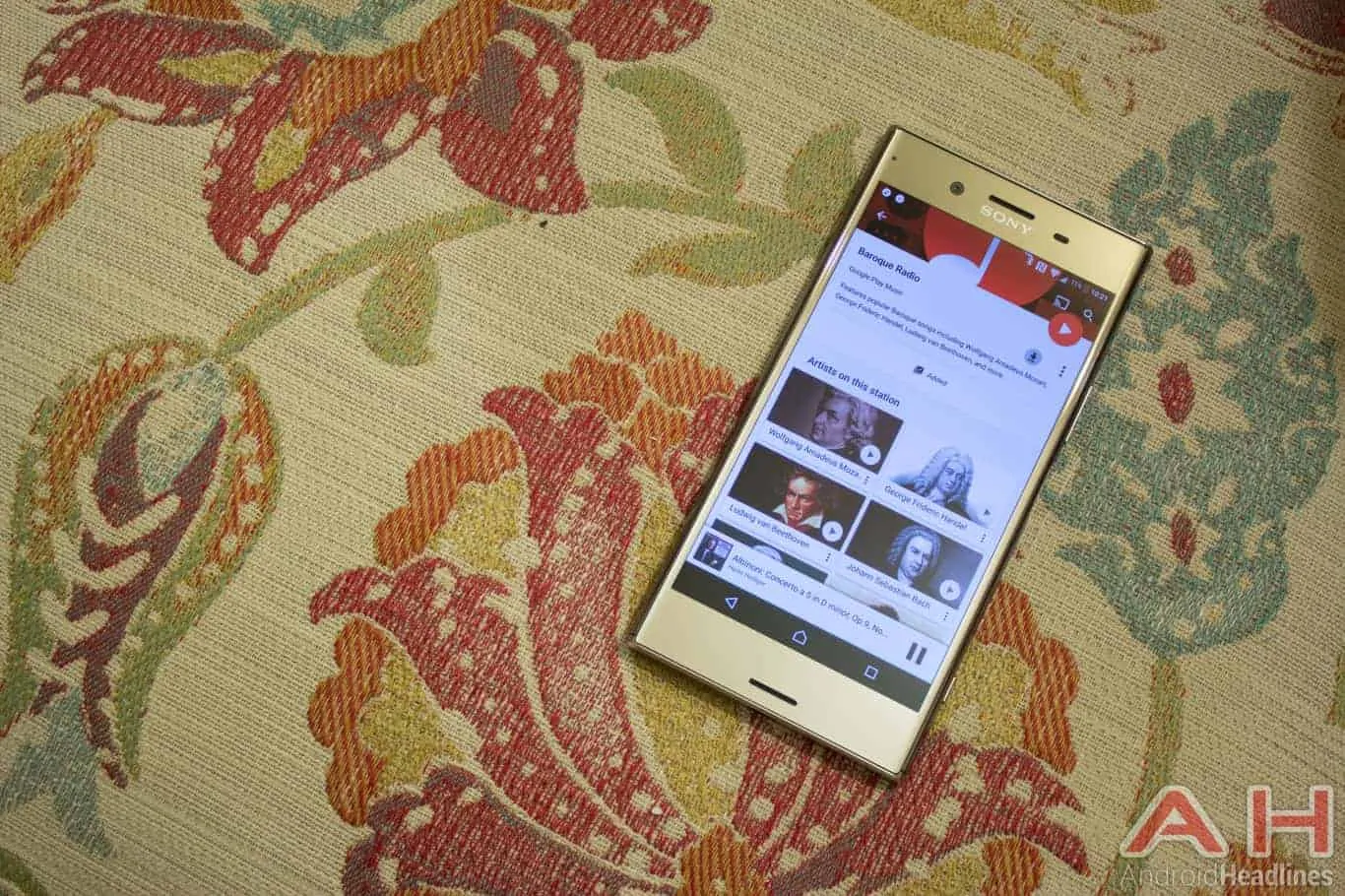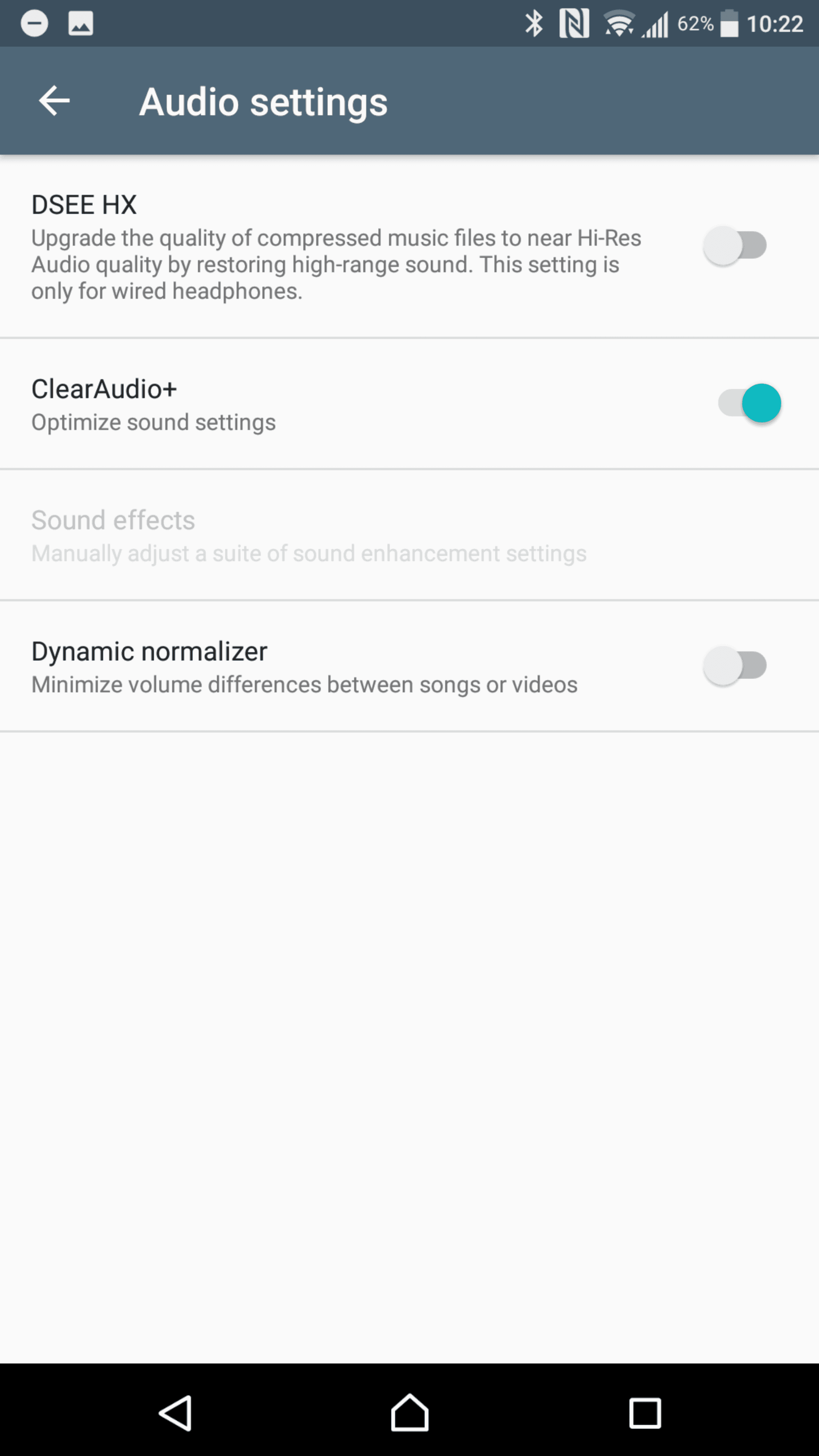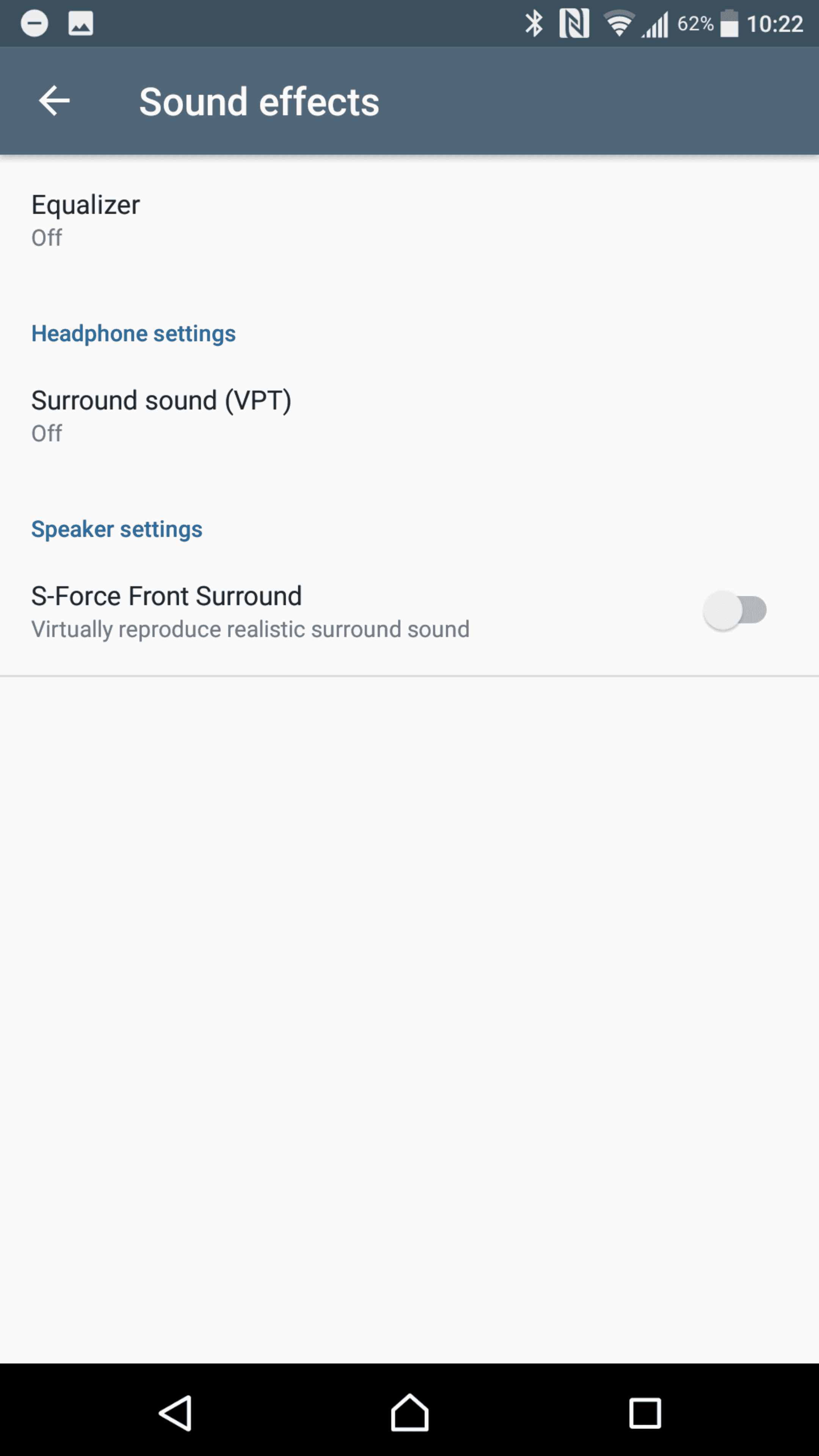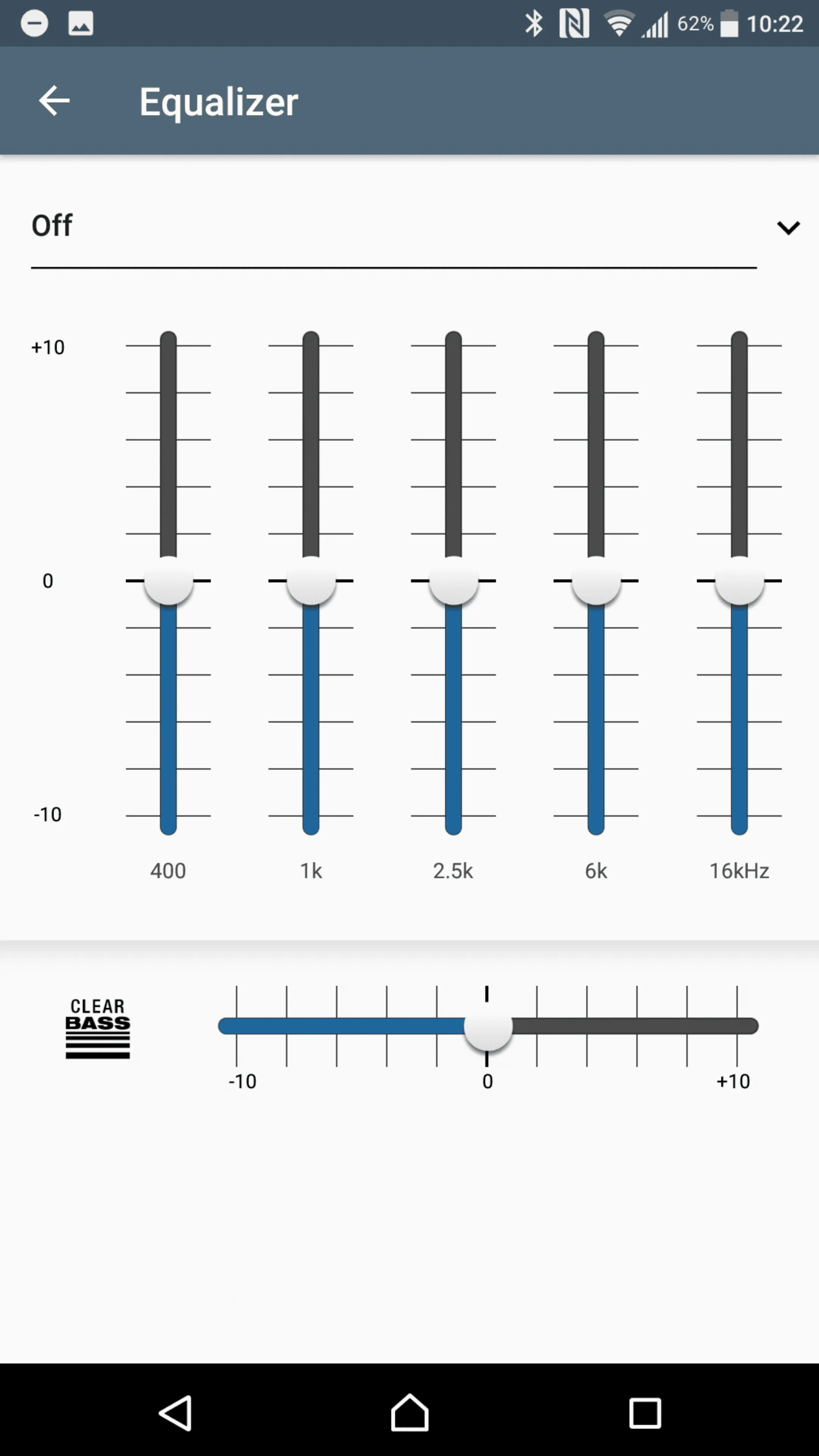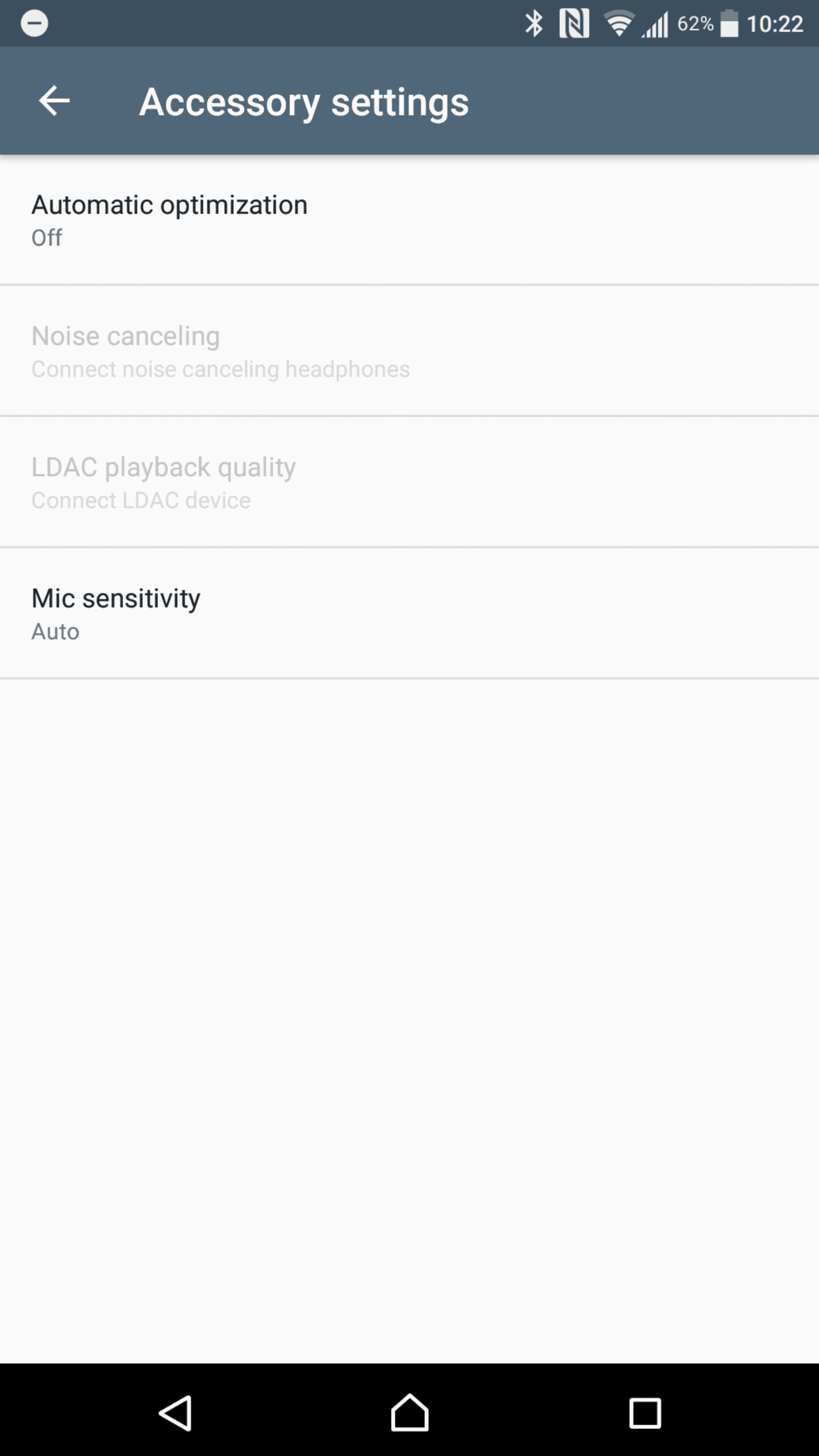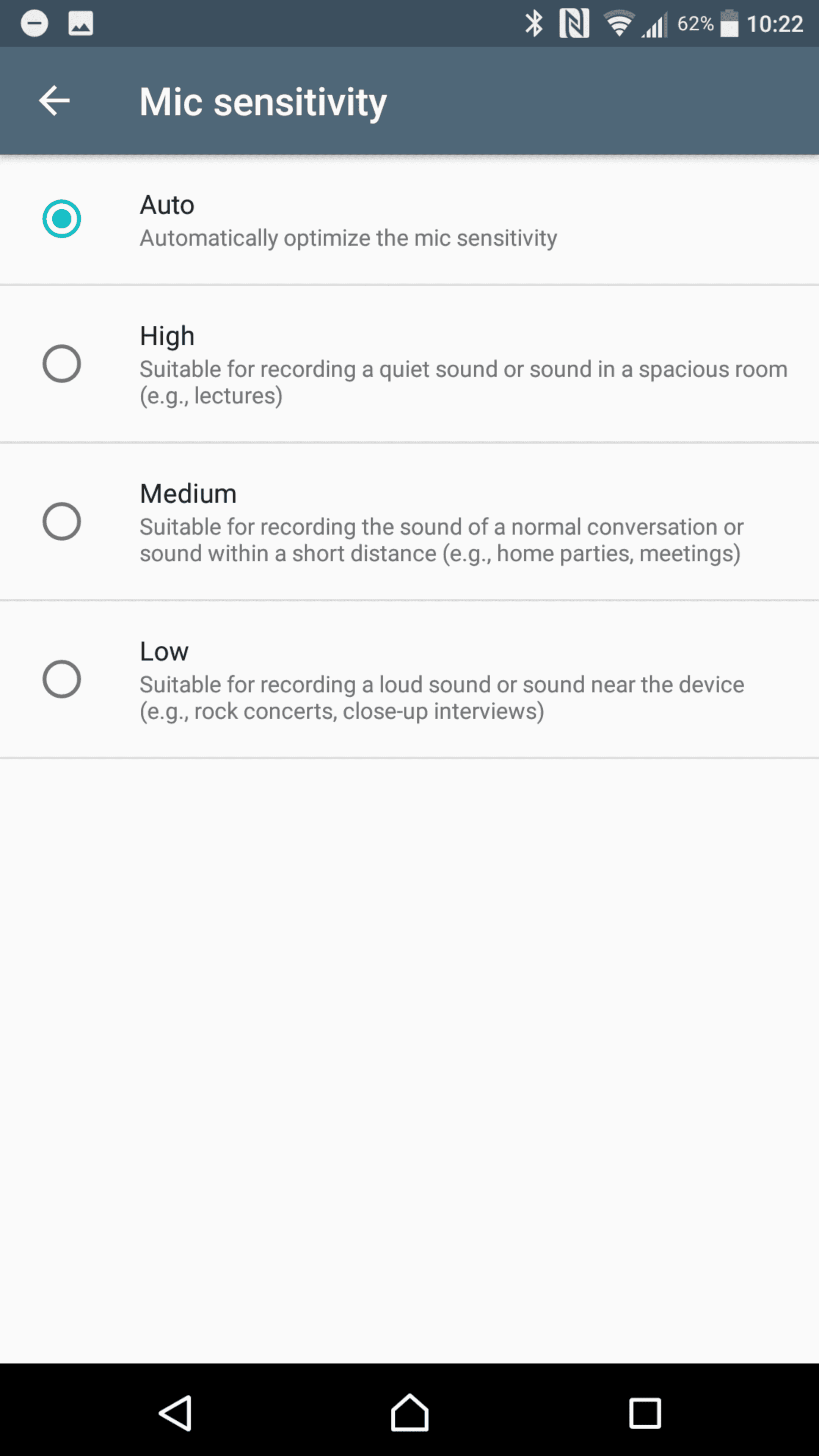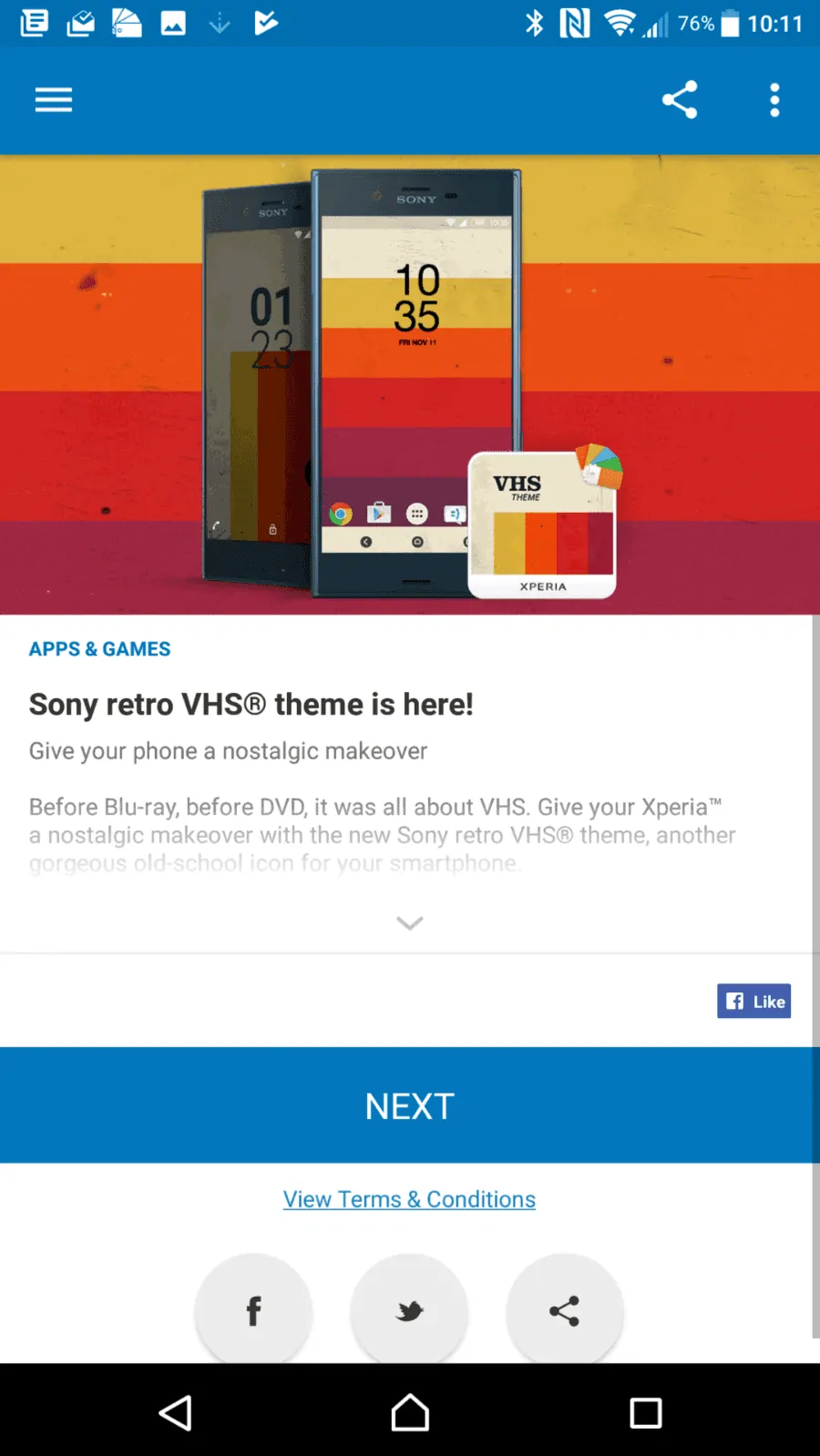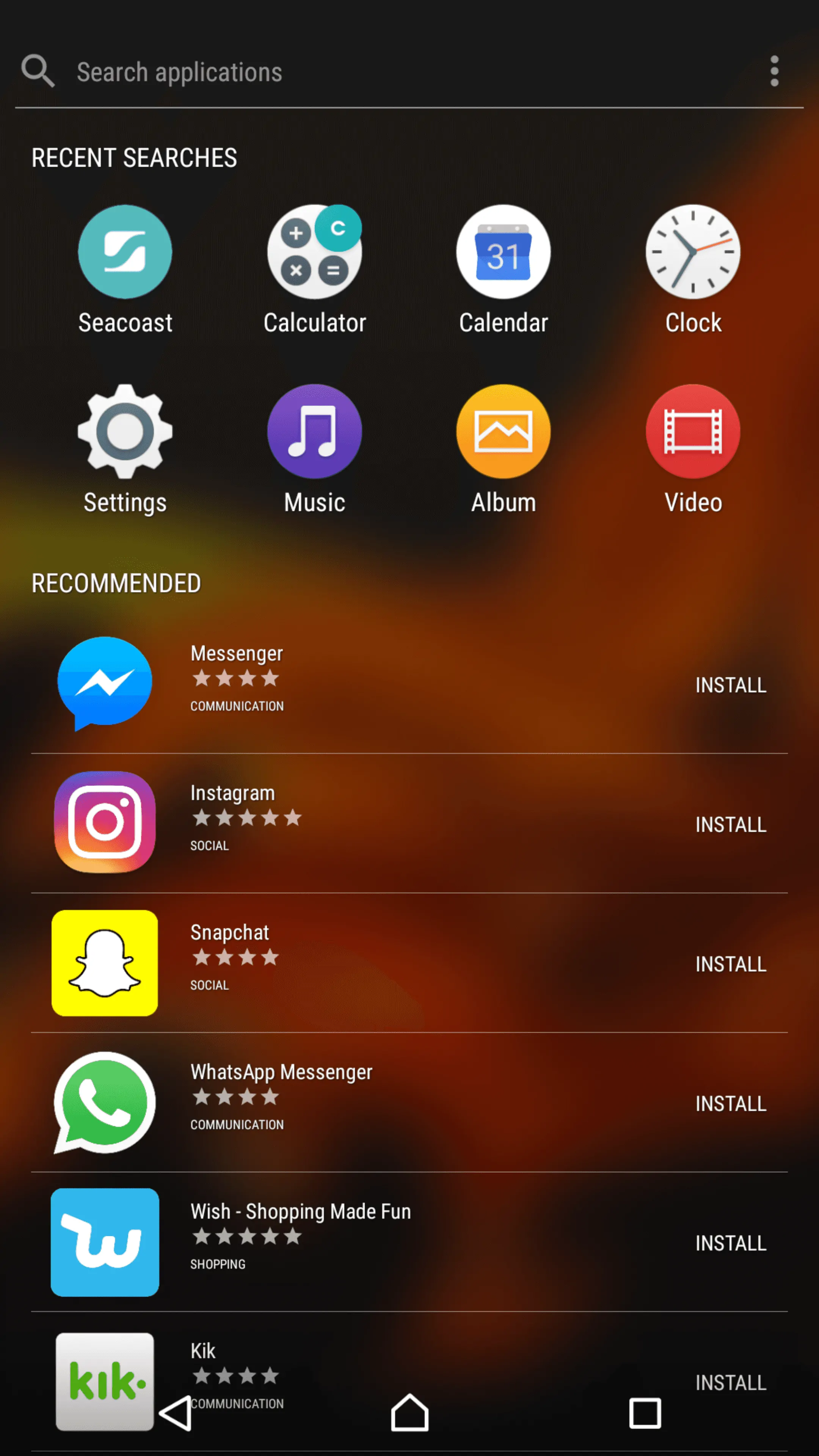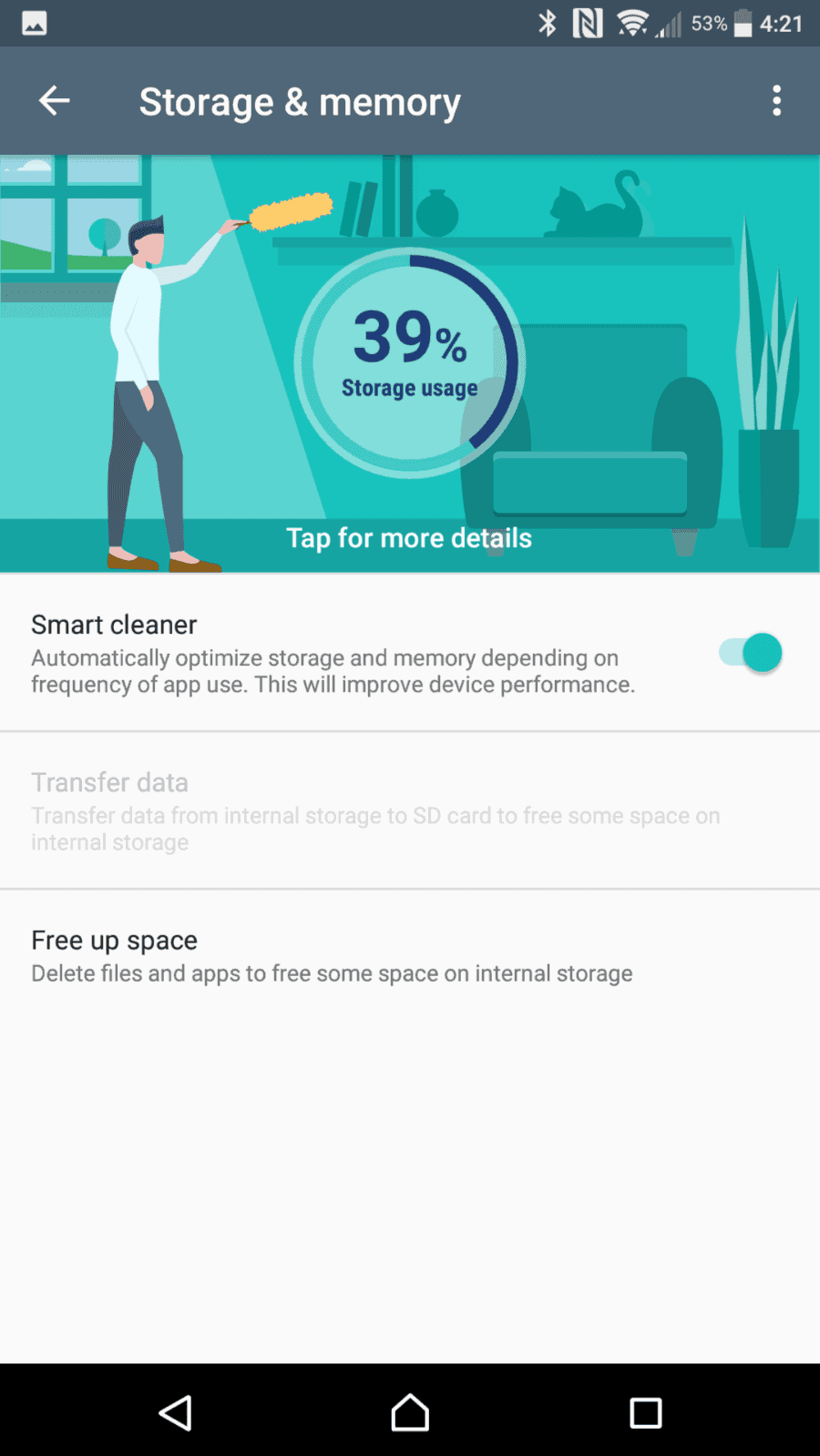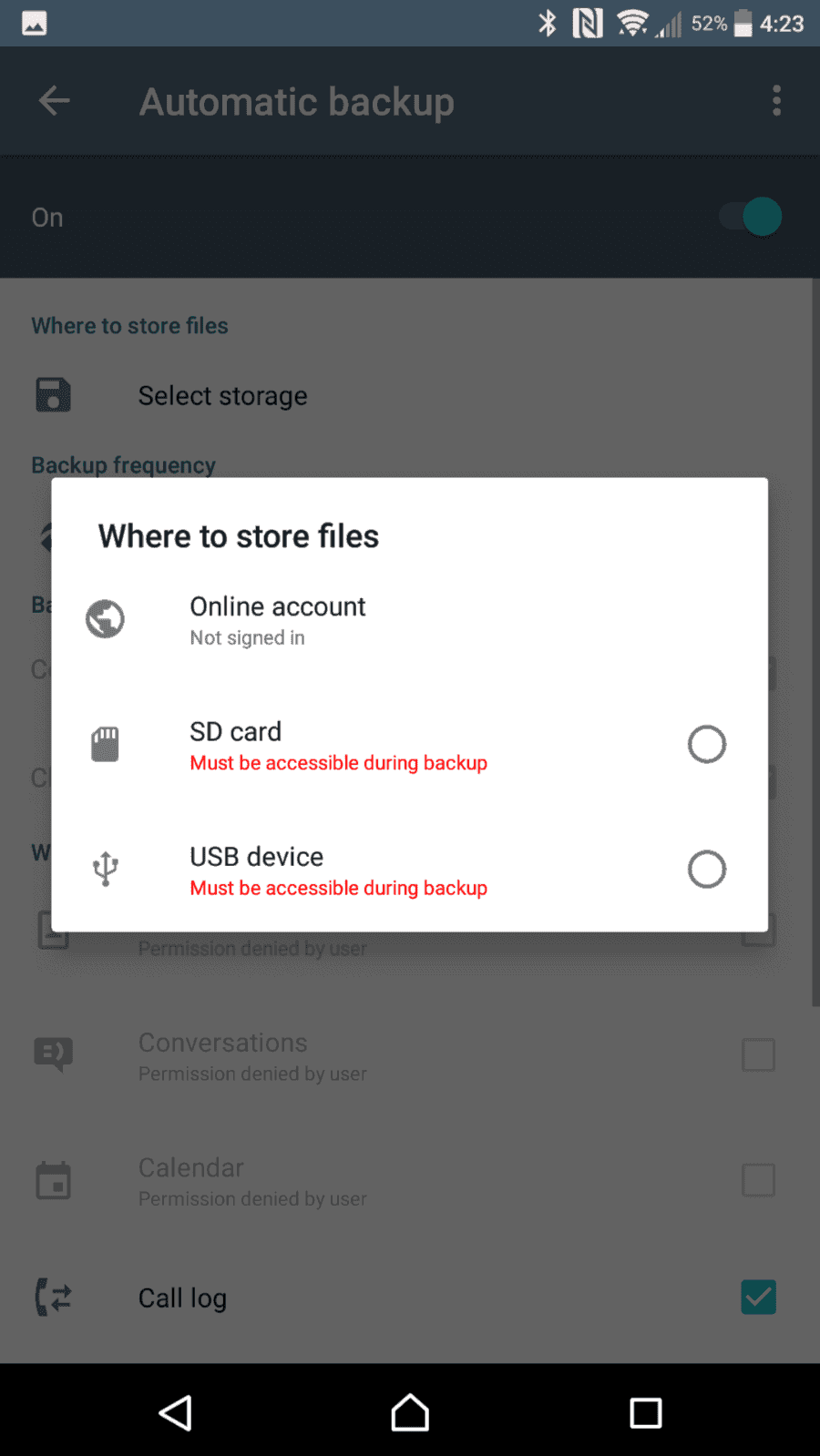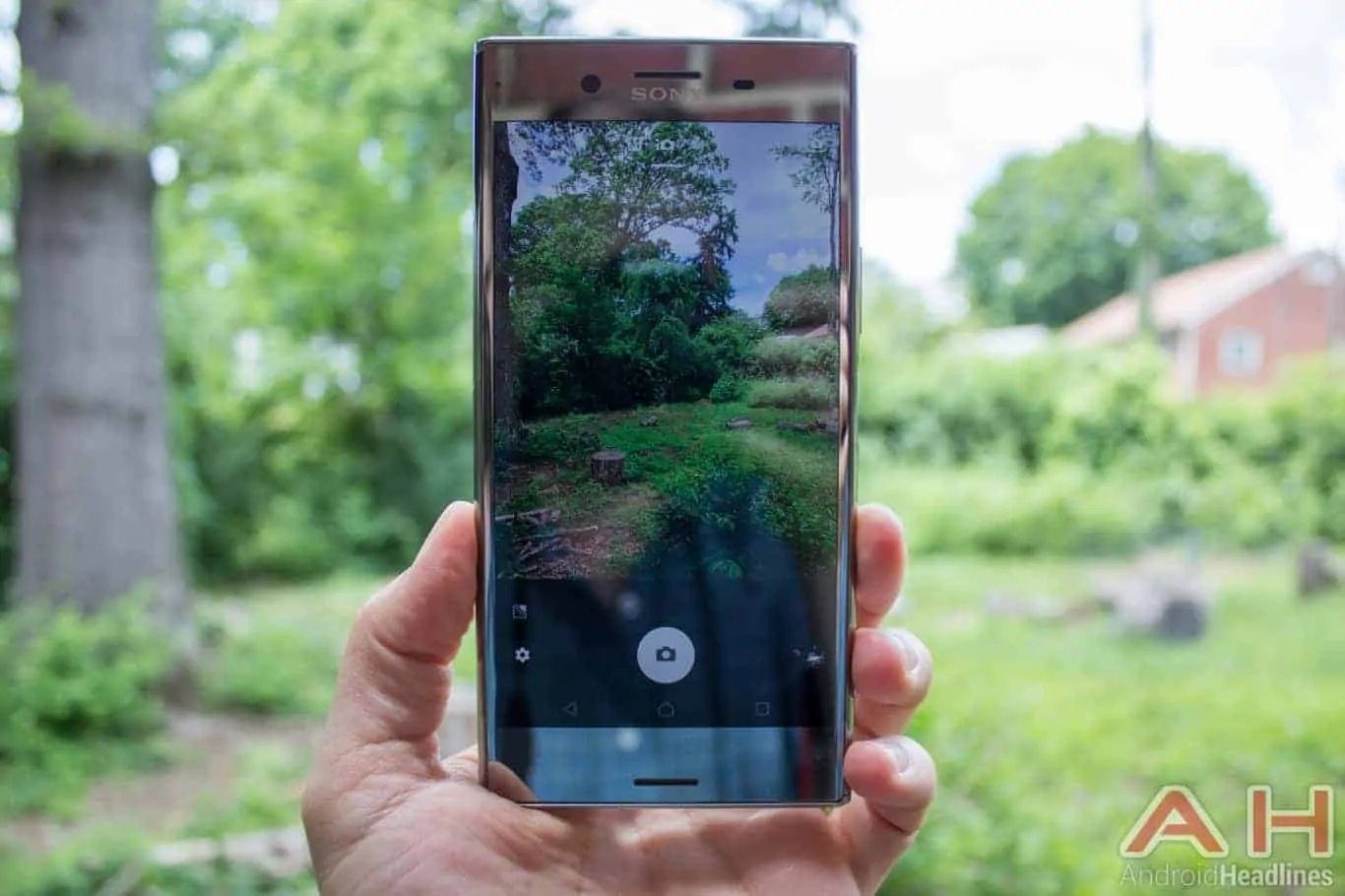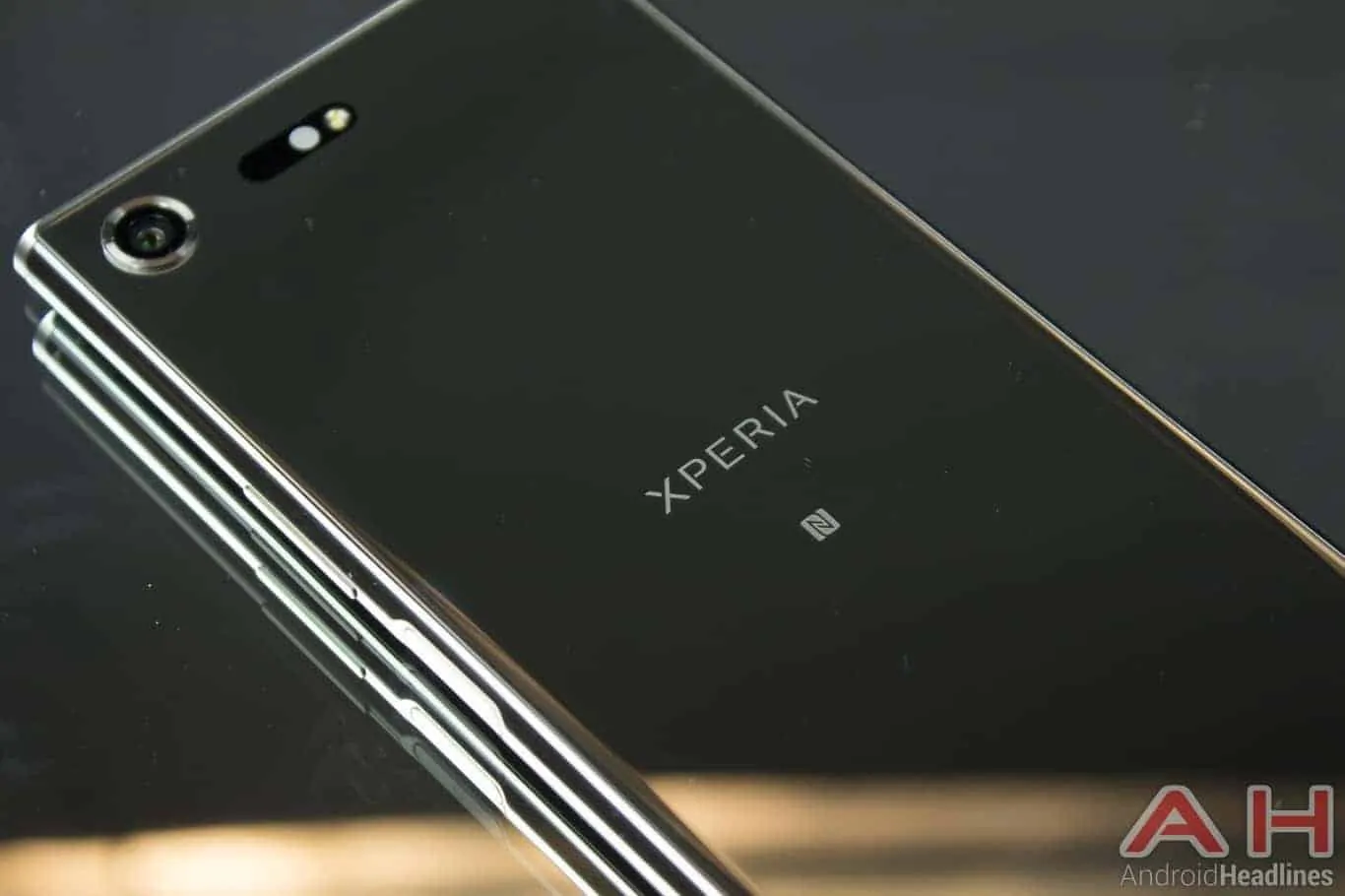Sony Mobile’s best phone in years, the Xperia XZ Premium is a real stunner
Sony is no stranger to flagship releases, often times releasing new phones every 6 months on the dot. Some of Sony’s recent refreshes have left a bit to be desired, from the overheating Xperia X last Spring, to the confusing naming changes throughout the year, Sony is back with a phone that’s a bit of a mouthful to say. The Sony Xperia XZ Premium certainly seems to throw all the bells and whistles in, all while innovating heavily on the camera front. Many of Sony’s excellent hardware decisions are here, but the older feeling hardware design is still present as well. Does this phone have what it takes to compete with the big hitters so far in 2017? Let’s take a look.
Video Review
Specs
Sony has absolutely packed the Xperia XZ Premium to the gills with the most top-notch specs you’ll find. On the front sits a 5.46-inch 4K Triluminos LCD display, capable of displaying HDR using HDR10, and covered with Gorilla Glass 5. Underneath the hood is the cutting-edge Qualcomm Snapdragon 835 system-on-a-chip (SoC), an octa-core processor which is made up of 8 2.45Ghz Kryo 280 CPU cores and an Adreno 540 GPU. Alongside it sits 4GB of RAM, 64GB of UFS-grade internal storage and support for microSD cards as well as dual-SIM cards at the same time, something not common in phones. The camera on the front sports a 13-megapixel resolution, with a sensor measuring 1/3 of an inch, 1.12-micron pixels and an f/2.0 lens. Around back is a 19-megapixel custom 1/2.3-inch Sony Exmor IMX400 Motion Eye sensor with f/2.0 lens, PDAF, 5-axis OIS, 1.22-micron pixels and a new multi-frame noise reduction algorithm. It also sports the ability to record at 960FPS in 720p, a hallmark for this flagship.
A non-removable 3230mAh battery resides inside, and a USB Type-C port gives this one fast charging capabilities via the Qualcomm QuickCharge 3.0 spec, along with intelligent Qnovo adaptive charging. A 3.5mm audio jack is included here and supports 24-bit high-res audio output, and Bluetooth 5.0 is also supported as well as high quality aptX, LDAC and DSEE HX. Two front-facing speakers can be found above and below the screen, featuring S-Force virtual surround sound. WiFi 802.11 dual-band through ac speeds is supported, and the package is powered by Android 7.1 Nougat. The device is IP68 water and dust resistant and measures in at 156mm tall, 77mm wide and 7.9mm thin, while weighing a rather hefty 195 grams. Sony is selling the Xperia XZ Premium in Luminous Chrome, Deepsea Black and Bronze Pink colors, and the device retails for £649/€749/$799/5,699 Yuan.
In The Box
Sony’s latest phone comes equipped with a USB Type-C port at the bottom, and as such Sony has included a USB Type-C to standard USB Type-A cable in the box. This cable allows customers to connect the Xperia XZ Premium to any normal USB Type-A port, whether it be a computer or other peripheral that people have used for years. A Qualcomm QuickCharge 3.0 rated wall charger is included in the box alongside a pair of manuals, and Sony is also throwing in a nice pair of Sony branded earbuds that connect to the 3.5mm headset jack on the phone. Since the SIM/microSD card tray is removable by hand, there’s no need for a SIM eject tool here.
Display
Sony has stuck with the Triluminos IPS LCD line for a long time now, and the Xperia XZ Premium continues that trend, all while bringing mobile displays into new territory. While Sony launched the first 4K mobile display over a year and a half ago with the Xperia Z5 Premium, it’s not launching the world’s first 4K HDR display in a mobile device. This year has ushered in a new wave of displays that all support HDR10 technology, most notably used on Amazon Prime’s video service among others, but none have been quite as high resolution as this one. Sony’s latest 5.5-inch pixel pushing monster looks as good as you would expect, packing in 800 pixels per inch of density, compared to the average 550 PPI for a modern Quad-HD phone.
All these pixels don’t do too much for regular content though, as the phone runs most elements at 1080p resolution unless otherwise called to run something at 4K. YouTube and Amazon Prime Video are notable exceptions, but even running at full resolution it’s impossible for the human eye to distinguish detail this fine, meaning the screen simply looks like a high resolution print-out instead of a pixel-based display. Color representation is absolutely top notch, and out of the box colors are super accurate, with great white balance that trends just ever so slightly on the warm side. Colors can be adjusted easily in the display settings, and personally I preferred the heavily saturated colors of the Super-Vivid mode, even if they were unrealistic.
Outdoor visibility was beyond superb, and this screen borders on one of the absolute easiest displays to see in direct sunlight. The dynamic contrast ratio helps with this, as the phone drops the contrast to aide in sunlight visibility when needed. Viewing angles are as good as you should expect from an IPS panel, given the technology, and there’s no obvious dimming or color changes at any angle, no matter how extreme. The weakest points here are typical with IPS panels. Black levels are good for an IPS but are not truly black, although this will get worse as the brightness increases. The persistence rate of the pixels is rather high too, leading to mild ghosting that becomes more obvious when higher contrasting imagery is on screen (think black text on white backgrounds).
As this isn’t an AMOLED panel there’s no Google Daydream support, which is truly a shame given how much a 4K display would have enhanced VR image quality. Sony has also decided against the always-on display trend, and there’s no double-tap to wake or lift to wake functionality here either. This is most painful on the US version of the phone, which features no fingerprint scanner anywhere, meaning you constantly have to press the power button to wake the phone up or put it to sleep. Sony offers a Glove Mode that will turn the digitizer’s sensitivity up a lot, making the phone usable even while using regular gloves; something folks that live in colder climates will certainly be happy about.
Hardware and Build
Sony’s hardware design has evolved to a degree over the past two years, but not always for the better. At the end of the Xperia Z line of phones we saw some smaller top and bottom bezels that hid the stereo speakers right at the edge of the phone. Now the chins have expanded a bit and the speakers are slightly off center in this top and bottom bezel, creating a phone that’s 2 millimeters taller and wider. This makes an already large phone a bit more unwieldy, unfortunately, and when compared to some other phones released this year, the Xperia XZ Premium looks a bit dated in the design aspects. The advantage of larger bezels is that there is more surface area to grab the phone in any way, which might be advantageous for some users.
Sony has chosen to outfit the phone with a similar glass and metal frame that the Xperia Z5 Premium had, and the mirror finish looks identical to what you would hang on a wall. There’s absolutely no curvature or distortion here, it’s a straight mirror on the back. The glass used is Gorilla Glass 5, so it’s unlikely you’ll run into too many times that it’ll get scratched, but being glass means it’s slippery as can be. Place it on an uneven surface of any kind and it’ll slide right off. I actually had the phone drop off a number of different types of surfaces during the review process, and while this is obviously a nerve racking thing to have happen, the phone didn’t crack. There is a small dent on the top right corner though, and it’s the softer aluminum material that’s likely to see this wear and tear throughout the life of the phone.
Having a frame made completely out of aluminum certainly helps things, and the fully curved left and right sides help smooth out the blow a bit. These curved sides also make the phone easier to hold than a straight phone would, and since the screen doesn’t curve around the edges, you likely won’t find yourself accidentally pressing the screen while holding the device. Like last year’s Xperia X line, the XZ Premium features completely flat top and bottom edges, which give it a nice contrasting feel in the hand, giving a flat place to better grip it. The entire phone is IP68 water and dust resistant, and it’s also coated in an oleophobic finish, meaning that mirror finish won’t get as smudgy as you might imagine. In fact I was rather impressed with how little smudges ended up on the back of the device, and most of the time any real smudges wore themselves off while in my pocket. The front didn’t fare as well, with smudges often hanging around the edges of the front panel, requiring a fair bit of wiping versus the back.
Around the frame you’ll find a centered USB Type-C port on the bottom, next to a microphone. A 3.5mm audio jack is situated at the left-most side of the top of the phone, with a centered noise-cancelling microphone as well. The camera subsequently is positioned on the opposite side of the phone on the back, leaving room for the camera lens and module on the opposite side of the 3.5mm audio hardware. The left side of the phone features Sony’s new removable tray that features both a dedicated microSD card slot as well as a dual-SIM card slot. The right side of the phone holds all the buttons, with the trademark concave power button sitting just above the midpoint of the chassis, while the volume right is just above, and a dedicated camera shutter button is all the way near the bottom. This power button features the fingerprint scanner in all but the US models of the phone, as Sony has decided once again that fingerprint scanners aren’t a necessity for the US market.
Performance and Memory
Packing the absolute latest in mobile processing power, the Xperia XZ Premium now marks the second phone line on the market to be powered by the Qualcomm Snapdragon 835 chipset, after the Samsung Galaxy S8. As a whole the Snapdragon 835 is 20% faster than last Fall’s Snapdragon 820, and that’s a very good thing considering the Xperia XZ Premium is built for 4K content. Still if you’ll recall from the displays section above, the phone only runs the main user interface in 1080p resolution, which is not just sharp and great looking overall, but also keeps performance consistent for apps with lots of heavy rendering effects. This is of course a bit disappointing for those wanting to see the phone running in 4K on every app and game, and unfortunately still there seems to be no option to force resolution for specific apps.
Sony has shortened the animation lengths between window transitions, making the phone feel even faster than it already is. This, combined with the enhanced processing power and the ultra fast UFS-grade storage means apps load absolutely instantly every single time, and 4GB of RAM with great RAM management means apps re-open immediately when called back up from the Overview multi-tasking carousel. Better still is the fact that, since the Xperia XZ Premium ships with Android 7.1 Nougat, you’ll be able to run two apps at once in split-screen mode without restriction. Any additional enhancements provided by future updates, like the upcoming Android O, will likely be seen here too, like the new picture-in-picture multi-tasking mode. Gaming will feel blazing fast too since these games only run at 1080p scaled up to 4K on the panel, meaning better performance than those Quad-HD phones will give all while looking almost as sharp.
Benchmarks
In most benchmarks, the Xperia XZ Premium sits at the top of the charts, which makes sense given that it’s only one of a few phones currently available with the Snapdragon 835 chipset. This chipset, being the latest released for Android-powered phones, features some of the absolute fastest in mobile chipsets available. Sony has outfitted the Xperia XZ Premium with UFS-grade storage too, meaning that it’s considerably faster than previous generation phones. Still there are phones with UFS 2.0 or UFS 2.1 that feature even faster internal storage speeds, something that could affect the overall performance of the phone in the long run. Check our suite of benchmarks run below.
Wireless Connectivity
After years of exclusivity with one or two US carriers, Sony is now an all-unlocked house, selling its phones online as unlocked GSM devices. This means that the Xperia XZ Premium can be used on AT&T, T-Mobile and any MVNO of either company, including networks like Cricket, Straight Talk and others. T-Mobile was used for our review period, and the experience was nothing short of excellent. Sony supports all the latest LTE spec, including the LTE+ Carrier Aggregation methods of grabbing more than one spectrum of signal to give you better speeds and reliability.
Sony doesn’t support WiFi Calling out of the box, at least not T-Mobile’s variant, which in general is the most widely available variant of WiFi Calling around in the US. This may negatively affect folks that regularly use WiFi Calling to enhance their signal strength in buildings or other areas where signal is shoddy or non-existent. Sony includes support for Bluetooth 5.0, which features a significant range increase and signal strength over previous Bluetooth versions, all while using less power. NFC and Android Pay are supported, but without a fingerprint scanner on the US model, mobile payments may be used less simply because a password or PIN has to be entered each time mobile payments are used, and it’s generally thought to be less secure.
Battery Life
Sony has focused a lot on battery life this time around, and it’s not just whether or not the battery will last a full day, it’s also helping make the battery stay working for years to come. As we’ve seen in Sony phones for years now, the Xperia XZ Premium features a number of battery saving features, including STAMINA mode and Ultra STAMINA mode. STAMINA mode turns off many background syncing features and other smaller battery drains to help add an hour or two to the end of the day in most cases, likely helping you get through that last stretch before you get to a charger.
Ultra STAMINA mode turns almost everything off on the phone, restricting even app usage to make the phone behave more like a feature phone, and thus making the battery last for days, not hours. Sony has also built in a new battery protection feature that ties into the Xperia Learning Engine, which is included on the phone. This feature attempts to charge the phone to 90% and keep it there until the last hour of charging, a time it knows by utilizing charging time history as well as any active calendar events or alarms. There seems to be a bug with the battery stats on this phone, as I would constantly get what seemed like wake locks, only to open it up and see that the highest “battery draining” apps supposedly had used hundreds of days worth of battery. These are just errors in reporting though, as the battery lasted a full day without issue, never once needing a top up of any kind.
Keeping a battery from staying at full capacity has proven to extend the life of rechargeable batteries significantly, and this feature is a huge deal for anyone who keeps their phones for longer than a single year, as it’ll keep the battery’s capacity high throughout the ownership period. Better yet Sony doesn’t require its own charger to be used for this feature to work, it’s just built into the phone’s software. The Xperia XZ Premium supports Qualcomm QuickCharge 3.0 via the included charger or any official QC3.0 rated accessory, and will charge around 70% of its battery in a mere half an hour of being plugged in; enough time to get through even a full day without worry.
Sound
Sony’s pedigree in the audio department is unrivaled in many categories, as the company constantly sets standards for high quality audio utilizing a number of connection types. We’ve seen 24-bit high-resolution audio from the company’s flagships for some time now, and anyone with a 24-bit audio receiver can enjoy such audio with the built-in 3.5mm audio jack. Wireless users will be happy with the new Bluetooth 5.0 range and signal strength, significantly enhancing Bluetooth capabilities for existing accessories, and bringing higher quality streams to new supported accessories. Sony supports aptX through Bluetooth and also has its own wireless LDAC standard for the highest quality wireless audio you’ll find anywhere, with a significantly boosted bitrate over regular Bluetooth audio.
Upscaling regular quality audio is done via DSEE HX, an algorithm that attempts to fill in the gaps that are missing in regular quality audio and output them to 24-bit audio. Similarly enhancing the experience is the S-Force virtual surround sound that’s enabled when utilizing the phone’s built-in external stereo speakers found on the front of the phone. These speakers are absolutely stupendous, and it’s wonderful to see a company that still prioritizes the user experience on the phone itself since many companies either still use a single bottom-facing speaker, or have moved front-facing speakers to a bottom-facing variety. This speaker configuration results in a more natural way to hear sound, since the screen is generally pointed toward your face, and naturally your ears. The volume and quality is also well above most phone speakers out there and could easily replace many Bluetooth speakers that don’t have great bass response.
Software
Sony is shipping the Xperia XZ Premium with Android 7.1.1 out of the box, an update that even the recently released Samsung Galaxy S8 doesn’t have. While Android O looms on the horizon, the promise of an update to O (likely version 8.0) will almost certainly happen in an expedient manner if Sony’s history of updating phones is anything to go by. Over the years too, Sony’s skin has slimmed itself down considerably in the looks department, removing the trademark look of Sony’s older and now outdated looking skin for something more modern looking. This mostly coincides with stock Android Nougat, including an identically looking and functioning notification shade and quick toggle buttons. Sony enhances Android with themes though, something that has become popular over the years, but something that’s not new to Sony phones.
This means an already established library of themes that can be applied to the entire phone, not just the launcher or wallpapers. In fact many of these themes feature dynamic elements; like a wallpaper that zooms and changes when moving from lock screen to home screen, themed background elements for system windows, keyboard themes and more. There’s an absolute boatload to choose from here, and all of them are listed on the Google Play Store for easy management instead of using yet another 3rd party app store that so many OEMs rely on. Sony also uses the Play Store in a unique way to give customers offers on apps and games throughout the year. The Xperia Lounge is an app pre-installed on the Xperia XZ Premium which features a number of promotions and special offers for Xperia customers, all of which are redeemable through the Play Store. Special offers come in the form of free themes (which normally cost money), free games or free in-game items, apps and even free services. These are all done seamlessly via Play Store coupon codes that are automatically redeemed to your Google account, keeping these offers available for life.
Sony also ships the phone with a number of different apps pre-installed, some Sony made and some 3rd party tie-ins. Sony has partnered with Amazon to give quick links to the Amazon Underground app store, as well as Amazon Prime video for 4K HDR playback, but these apps aren’t pre-installed. Sony does pre-install AVG Pro with a 180-day free trial for users that offers a number of extremely useful security features. Camera Trap will take pictures/video of someone who’s trying to break into your phone if it’s lost, while Device Lock will lock the device if someone tries to replace the SIM card. App Lock will allow you to individually lock apps behind a secondary password or PIN for extra security, and App Backup will allow apps to be backed up to a microSD card for external backup, in addition to the already built-in Google cloud backup methods. Sony also includes a handful of first party apps including a news feed, Movie Creator, local music app and the TV SideView app for remote controlling any supported TVs through a WiFi-enabled remote control feature.
Sony’s LifeLogging feature is back and better than ever, having recently updated to include a number of new features, as well as deep integration with your Google account. LifeLog keeps track of your day including the standard steps taken and distance walked, but it’s much more than that too. LifeLog also tracks additional health information like running or biking automatically, sleep schedules, calories burned, weight, music listened to, how long you’ve been driving and even individual app usage and overall screen time. All these items are put together in an amazing timeline format that’s easily scrolled through, allowing you to see what you’ve been wasting your day on. You can even put in gaming, book reading and movie time, and Sony has a number of other elements in here as well. It’s a really cool way to keep track of more than just steps, and it provides valuable fitness information to help you better schedule your day for healthy activities.
Sony supports a number of screen casting methods including Miracast, Google Cast and DLNA media streaming. Gamers also have the ability to natively pair a DualShock 4 controller with their phone, significantly enhancing the mobile gaming experience over touch screen games. Overall Sony has packed the Xperia XZ Premium full of quality experiences that deliver better than stock Android experiences, and while it’s not quite as feature rich as Samsung’s skin, you’ll find that it’s faster in general than most skins out there, including even stock Android at times.
Fingerprint and Security
As fingerprint scanning has become the base standard for nearly every smartphone out there, despite price points, we normally don’t talk about fingerprint scanners in reviews nowadays. Sony, however, has seemingly given the US market up as an afterthought when it comes to fingerprint scanners though, and once again includes no fingerprint scanning abilities on the US model of the Xperia XZ Premium. While Sony chocks this up to a business decision of some kind, they’ve never given a truly good reason that they would deliberately take the fingerprint scanner out of the power button. The Xperia XZ Premium, like the last handful of Sony phones, includes a fingerprint scanner in its side-mounted power button in every other region of the world it’s sold in.
At best this is a bad business decision to say the least, and at worst it’s irresponsible when taking the security concerns of its users into play. Not including a fingerprint scanner means that users will likely opt for either no security, something that’s obviously not good in a world full of malicious intent, or pins and patterns that make unlocking the phone easy throughout the day instead of actually secure. It’s frustrating to see a $700+ smartphone not include such a basic feature in 2017, but Sony is doing it yet again, and it’s likely this will be a make-or-break feature for many people without a doubt.
Camera Software
When it comes to mobile camera sensors, Sony has been at the top of the game for years now. Most smartphone manufacturers, including the big guns like Samsung and Apple, still source their camera sensors out to Sony for the latest and greatest technology. With that being said, Sony’s own smartphones have often fallen victim to less than fantastic camera software, diminishing the effects of their often more advanced camera sensors inside. Once again Sony has created a special version of its camera sensors for the Xperia XZ Premium, and this time around it’s launching the new IMX400 series with this phone. This new generation of sensor adds a third layer to the mix, now including a 128MB layer of memory between the sensor and the processor. This gives the phone a new buffer to work with, allowing Sony to not only take pictures 2 seconds before you even press the shutter button, but also to buffer Super Slow Motion video to it for a few seconds.
These two new features represent the bulk of the changes from the previous versions of Sony’s Xperia camera software, while the rest of the software’s design remains the same as last year’s Xperia X line. This is unfortunate for a number of reasons, mainly due to UI design that’s not friendly for quick use outside of regular picture taking. Intelligent Auto mode is the first thing that loads when the software launches, with manual mode and video mode being single swipes over. Manual mode is often separated from auto mode on most camera software that has such a mode, however separating video mode from picture mode creates unnecessary loading time. Having dedicated photo and video shutter buttons in the main mode is far more efficient, and that’s not the only part that’s odd. Sony’s video mode only lets the phone record up to 1080p resolution at 60 frames per second, with no option to increase the video resolution to 4K. This 4K recording option is actually a separate applet that’s found on the right or top-most section of the camera, depending on the orientation you’re holding it, and requires not only two swipes up, but an additional loading screen to record 4K video.
It’s entirely possible that most users will never even find this option in the first place, and the length of time it takes just to get to it will likely turn plenty of folks off. It’s in this additional section where you’ll find Sony’s other apps, like the AR apps and additional downloadable modes. Super Slow Motion is found, oddly enough given the 4K app, within the regular video recording section in the camera. A separate button above the video record button denotes switching between these sub-modes, but makes sense within the context of the app. Slow motion mode allows switching between 120FPS and 960FPS in the settings, another convoluted way that’s likely hidden from more users than not. There are two different Super Slow Motion modes to be found here, one that will record in 1080p resolution at 30FPS, while a secondary button will record 5-second burst shots in 960FPS. The other option is just to record a 5-second 960FPS short clip by itself, although both of these are a little tricky because the timing of the start is tough.

By not automatically recording at the slowest speed and then shortening the frames, Sony is relying on the user to have their timing right for these shots, something I had a very hard time with on the first try, much less a handful of tries after that. In photo mode the phone attempts to intelligently identify situations where it needs to anticipate the shot, as the phone will occasionally take pictures 2 seconds before you press the camera shutter button. These seem to be triggered by movement on screen, giving you an option to select between 4 of what it considers the best photos taken during this automatic burst mode. This mode saved my bacon more than once, and is incredibly effective to say the least. It’s just a shame this predictive functionality couldn’t work on the video mode as well, and it makes pretty clear that while Sony’s camera software is a powerful one, it needs a little help when it comes to UX design.
Camera Performance and Results
Sony’s dedicated hardware shutter button is a thing of beauty; something they haven’t wavered on including in every flagship despite most other OEMs removing it. This ultimately gives the Xperia XZ Premium the simplest way to launch the camera over all other phones out there, holding down the shutter button no matter if the phone is locked or not, to launch the camera software. Sony’s camera software is also among the fastest to launch too, being ready to take a shot within 2 seconds flat. Focusing is lightning fast upon launch, however re-focusing takes quite some time; up to 3 seconds before the camera realizes it needs to re-focus and then subsequently does so. Sony does include some excellent object tracking though, which will help significantly when it comes to re-focusing on a moving object. This will also help keep moving objects in focus at all times, avoiding those blurry photos you might end up with on other phones.
One of the nicest features here is the automatic scene selection in auto mode. Sony has seemingly dozens of different scene modes, all of which are optimized for different lighting conditions, movement conditions and a number of other factors. HDR, which can be manually enabled in manual mode, is automatically used in different types of scenes when the camera identifies a scene that needs it. This is all done instantly without any user input at all, and the results are fantastic. Thanks to the intelligent burst mode that’s also used whenever the camera detects it’s necessary, it’s extremely difficult to end up with a blurry photo in most situations. Even lower light situations produced some sharp photos that were in focus and had fantastic dynamic range and overall balance.
Image processing has always been something Sony’s phones tend to be a little aggressive with, and the Xperia XZ Premium’s 19-megapixel shooter is no exception. Since the phone has more pixels to work with here than most phones nowadays, Sony’s heavier processing doesn’t bring up the issues that it could if the megapixel count were lower. Still in lower light situations the overly heavy processing makes things look soft, and tends to strip pictures of detail under low lighting conditions. This is also exacerbated by the fact that the pixels are smaller than most modern phones; a side effect of cramming more pixels in the same 1/2.3” space.
Daytime camera results are nothing short of stunning. Sony’s image processing shines here, with loads of detail that take up every pixel of the 19-megapixel sensor. Dynamic range is almost unrivaled at times, and overall detail is simply unmatched. This is easily one of the all time best cameras in good light we’ve ever seen. Low light doesn’t fare nearly as well, but it’s not because of the photos looking dark or underexposed, it’s the ultra heavy image processing that kicks in during these situations. The IMX400 series sensor here can up the ISO to seriously high levels, and it’s here where the camera produces the worst results, simply because things absolutely lost detail. Where companies like LG and Samsung apply what looks like a watercolor-type filter to these situations, Sony seems to simply blur pixels, resulting in photos that are clear but super soft. These photos look great on a phone-sized screen, but zoom in or put them on a larger screen, like a TV or monitor, and they absolutely lose their shine.
Video mode remains incredible, as it did last year. Sony offers two different types of image stabilization: Steady Shot and Intelligent Active. Steady Shot utilizes the hardware optical image stabilization method and is available on all resolutions, even up to 4K recording. Intelligent Active utilizes an additional digital stabilization mode that only works up to 1080p resolution. This extra stabilization works wonders for steady video, and keeps even the bumpiest video looking like the camera is mounted to a heavy-duty hardware stabilization system, and incredible feat that surpasses basically everything else on the market. This works by cropping the image heavily, thus the limitation at 1080p.
Super Slow Motion is of course the star of the show, although there are limitations that need to be kept in mind. First off is the way Super Slow Motion operates, which we covered above, which means you’ll need to be quick on the draw to land the right shot. On the bright side you can take as many Super Slow Motion recordings as you want during a filming session, the button just needs to be pressed every 5 seconds to initiate the process. As the Xperia XZ Premium can record 4x faster than any other phone on the market, you’re looking at 4x slower motion than any other phone as well. The amount of detail and nuance found in this slow rate of recording is nothing short of astounding. This video will be a little fuzzier than standard 4K recorded content of course, and even slightly fuzzier than the standard 1080p recorded video, but the rate of slow motion really makes up for that. See all the samples we took in the gallery below.
The Good
Gorgeous mirror finish
Amazing 4K HDR screen
Front-facing stereo speakers are a godsend
3.5 mm audio jack
Bluetooth 5.0, aptX, LDAC support
Top-tier overall performance
Great themes and other software goodies
New intelligent camera modes are superb
Super Slow Motion is a thing of beauty
Amazing photos during the day
Some of the best video recording capabilities to date
QuickCharge 3.0 support
The Bad
Huge bezels
Mirror finish means lots of smudges to clean
No WiFi calling
No fingerprint scanner in US
Low light performance makes soft images
Camera software is clunky and confusing
Conclusion
Easily the most complete and well designed phone since the Xperia Z5’s launch 2 years ago, the Xperia XZ Premium is just about everything you could ask for in a 2017 flagship. Gorgeous premium build, incredible screen quality with 4K HDR playback on supported content, a killer camera and loads of software features all without sacrificing speed or performance as last year’s models did. There’s certainly some setbacks, including the bizarre lack of a fingerprint reader on the US model, which may make or break the purchase entirely for some folks, but it doesn’t limit the phone’s ability to use Android Pay or other services.
The camera’s UI is a bit clunky, but the new Super Slow Motion provides the absolute highest frame rate video capture on any smartphone by a mile; 4x in fact. Sony’s intelligent capture modes ensure you’re getting the right shot before you even mean to, although low light performance leaves a bit to be desired in the detail department. Sony also packs in the best audio hardware of any 2017 flagship, including the stereo front-facing speakers with virtual surround sound. The biggest downside to the design is the size, which feels downright old and clunky next to some of the other 2017 phone designs we’ve seen so far. Still it’s a solid phone that’s the best Sony has made in years, and one that handily competes on nearly every level in 2017.




